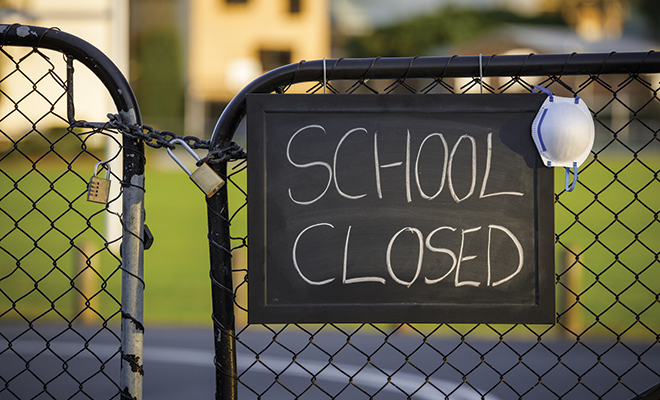
What Will School Look Like This Fall?
Normally, at this time of year, parents and students are excitedly buying school supplies, decorating lockers and anticipating the announcement of this year’s teachers. 2020 is different, however. Very different. Instead of concentrating on picking the perfect crayons and rulers, families will be stocking up on masks and hand sanitizers. And instead of planning a plethora of after-school activities, students and staff will anxiously await any final health guidelines due to COVID-19.
In late June, the American Academy of Pediatrics urged school officials to send children back to school in the fall, stating the goal should be to have students physically present for learning. Most states and school districts then hurriedly decided the best ways to teach via social distancing for the 2020-2021 school year.
As parents and grandparents, we expect our children to be educated in a safe and helpful environment, but the “what ifs” and the unknowns make usually basic schooling decisions challenging for everyone. Here’s what school may or may not look like this year.
K-12
Learning in middle schools and high schools will be challenging, while elementary schools present their own set of problems. When it comes to safety, officials are preparing for all sorts of scenarios. One thing is clear. Classrooms will look considerably different than in the past.
The biggest challenge seems to be spacing. A typical public-school classroom has about 25 students. If students sit six feet apart, that room can fit 12 students. Since most school districts don’t have the space, some schools may be opting for staggered learning with options like the following.
• Elementary students come at different days than older students and learn online the other part of the week.
• Some students attend a half year, while the other group attends the other half of the year.
• Everyone attends school a half day, every day.
Staggered learning isn’t the only major challenge; other new protocols in the wake of the pandemic might include children and staff wearing masks, halting or adjusting cafeteria lunches, limiting or dropping activities and not allowing visitors during school hours. Experts are also concerned about social distancing on buses. Bus drivers may be required to take students’ temperatures before allowing them to board half-empty buses with assigned seating. To make matters even trickier, students and drivers may be separated by sheets of plexiglass. Some schools may not offer transportation.
Colleges and Universities
While officials desire to ensure the health, safety and wellbeing of the students, other factors such as finances and learning obstacles come into play. Both students and staff, especially older staff, will be faced with higher health risks. This will also include the communities where campuses are located. Will not going back to school disrupt or hurt the economy of the institution, college town and local businesses? The latter choice seems to be the issue, so most colleges are planning to return to campus in the fall, but with many changes.
In mid-June, one major university announced classes would start as planned on Aug. 24, but all in-person classes would conclude before Thanksgiving. Labor Day and fall break were removed from the calendar, while finals and a study week would be held remotely after Thanksgiving. Although school officials are prioritizing the in-person classroom experience. The university is offering alternative means of instruction for those not wanting to attend live classes. As far as dining, most schools will offer “grab-and-go” meals and the move-in process was staggered by appointments to support social distancing. At the time of this writing, most universities are requiring students to wear masks, and coronavirus testing will be performed widely throughout campuses.
Homeschooling
And just as some parents are preparing for a different experience at school this fall, others are looking at alternative education options that don’t include the classroom at all. Home educator associations are reporting dramatic increases in inquiries for homeschooling since the pandemic, while in a recent USA Today poll, six of ten parents reported they were likely to choose at-home learning options.
With numerous homeschool support groups around the country, homeschoolers traditionally have been connected with each other online in cooperative learning groups and through social interactions. But with the unknown of the pandemic as well as some parents homeschooling for serious health reasons, these social interactions will probably change as well. Activities such as museum tours, learning activities and other field trips may or may not happen.
The Unknown
Although most states and school districts have been working tirelessly over the last few months to reopen within the constraints of public health guidance, the pressures of the pandemic may change education forever. With information changing almost daily and the uncertainty of the public health situation, it is hard to predict the future of learning. ■
Sources: educationnext.org, nytimes.com, kshb.com, usatoday.com and syracuse.com.







